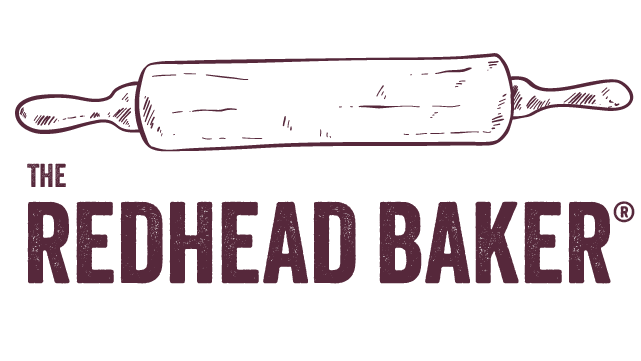I think Peter Reinhart is my personal god. So, Thursday night, I started his "Rich Man's Brioche," out of his book, The Bread Baker's Apprentice (the same book that has his recipe for focaccia). The recipe made 16 two-ounce petit brioche à tête, and 6 two-ounce rolls (having run out of brioche molds).
Like the focaccia, the recipe was EASY. The only mixer attachment used is the paddle. Combine bread flour and yeast and milk to make a sponge. Add eggs, more flour, sugar, salt and LOT of butter, spread on a baking pan and refrigerate. Separate into 2-ounce lumps, form, proof and bake! If you're not familiar with "bread baking" terms, this might sound a little intimidating, but Peter Reinhart really does write out step by step exactly what you need to do.
The end result is a very light, buttery, moist roll. Reinhart also offers two other variations: Middle-Class and Poor Man's Brioche. Middle-Class has half the butter of the Rich, and the Poor Man's has a quarter of the butter.
Peter Reinhart's Rich Man's Brioche
Source: The Bread Baker's Apprentice
Ingredients
- ½ cup (2 ¼ ounces) unbleached bread flour
- 1 tablespoon instant yeast
- ½ cup whole milk, between 90 and 100 degrees F
- 5 large eggs, slightly beaten
- 3 ½ cups (15 ounces) unbleached bread flour
- 2 ½ tablespoon (1 ¼ ounces) sugar
- 1 ½ teaspoon salt
- 2 cups (16 ounces) unsalted butter, at room temperature
- 1 egg, whisked until frothy, for egg wash
Directions
- Make the sponge: In the bowl of a stand mixer, stir together the ½ cup of bread flour and the yeast. Stir in the milk until all of the flour is hydrated. Cover the bowl with plastic wrap and allow to sit for 20 minutes.
- Make the dough: Add the eggs to the sponge all at once and beat on medium speed until smooth. In a separate bowl, stir together the remaining flour, sugar and salt. Add this mixture to the dough and beat on low with the paddle for 2 minutes. Allow the mixture to rest for 5 minutes.
- Turn mixer to medium speed, and gradually add the butter, a quarter at a time, waiting until the dough becomes smooth before adding the next quarter. Continue mixing for another 6 minutes after all the butter is added. Scrape the bowl from time to time. The dough should be very smooth and soft.
- Line a baking sheet with parchment and mist with spray oil. Transfer the dough to the pan and smooth with the bowl scraper. Make the dough form a rectangle, about 6 by 8 inches. Mist the top of the dough with spray oil, and cover the pan with plastic wrap. Refrigerate the dough at least four hours, or overnight. (Note: I refrigerated the dough for two nights.)
- Shape: Remove the dough from the refrigerator. The dough is easiest to shape while cold. If it warms up or softens, return it to the refrigerator. (Note: the following shaping, proofing and baking directions are for petit brioche à tête -- please see "The Bread Baker's Apprentice" for instructions regarding large brioche à tête or loaves.) Spray your brioche molds with spray oil and place the molds on a sheet pan. Divide the dough into 1 ½- to 2-ounce portions (depending on the size of your molds). Dust your hands with flour. Take a portion of dough, and roll it into a thick strand that is thicker at one end than the other. Take the thick end, and poke a hole through it, and loop the tapered end through that hole so that it pops out the other side so it forms a cap. Place the dough in the mold with the cap side up. Continue with each piece of dough.
- Proof: After all the dough is shaped, mist with spray oil. Allow to proof for 1 ½ to 2 hours. Gently brush the tops with the egg wash, and allow to proof another 15 to 30 minutes. While the dough is proofing, preheat your oven to 400 degrees F. Place the rack in the middle of the oven.
- Bake: Bake the brioche for 15 to 20 minutes. Remove the brioche from the molds as soon as they come out of the oven and place on a cooling rack for at least 20 minutes before serving.

Kirsten
Wednesday 12th of December 2018
O.M.G. The weight measurement for the flour is massively off and I'm not sure I can salvage it now. It should be 16oz NOT 8.25oz. So frustrating, I had a feeling when I was adding the flour that something was a little off but I trusted you to have it right if you put how many oz it should be in the recipe.
anisa
Tuesday 27th of June 2023
@Coleen, is it 16oz? Your recipe says 15oz? Thanks!
Coleen
Wednesday 12th of December 2018
Thank you for bringing this error to my attention -- I'm so sorry! I will fix it in the post.
Alan
Tuesday 20th of February 2018
I've made this dough and used it for bread as well as suisse brioche. It's too rich for the bread application but it does work with the suisse brioche. I've also made the middle-class brioche which I think it best. Soon I'll try the middle class brioche for making suisse brioche. I bet it will be better.
Creating Nirvana
Sunday 12th of September 2010
Thank you for adding my blog to your blog list! Your brioche bread sounds amazing.